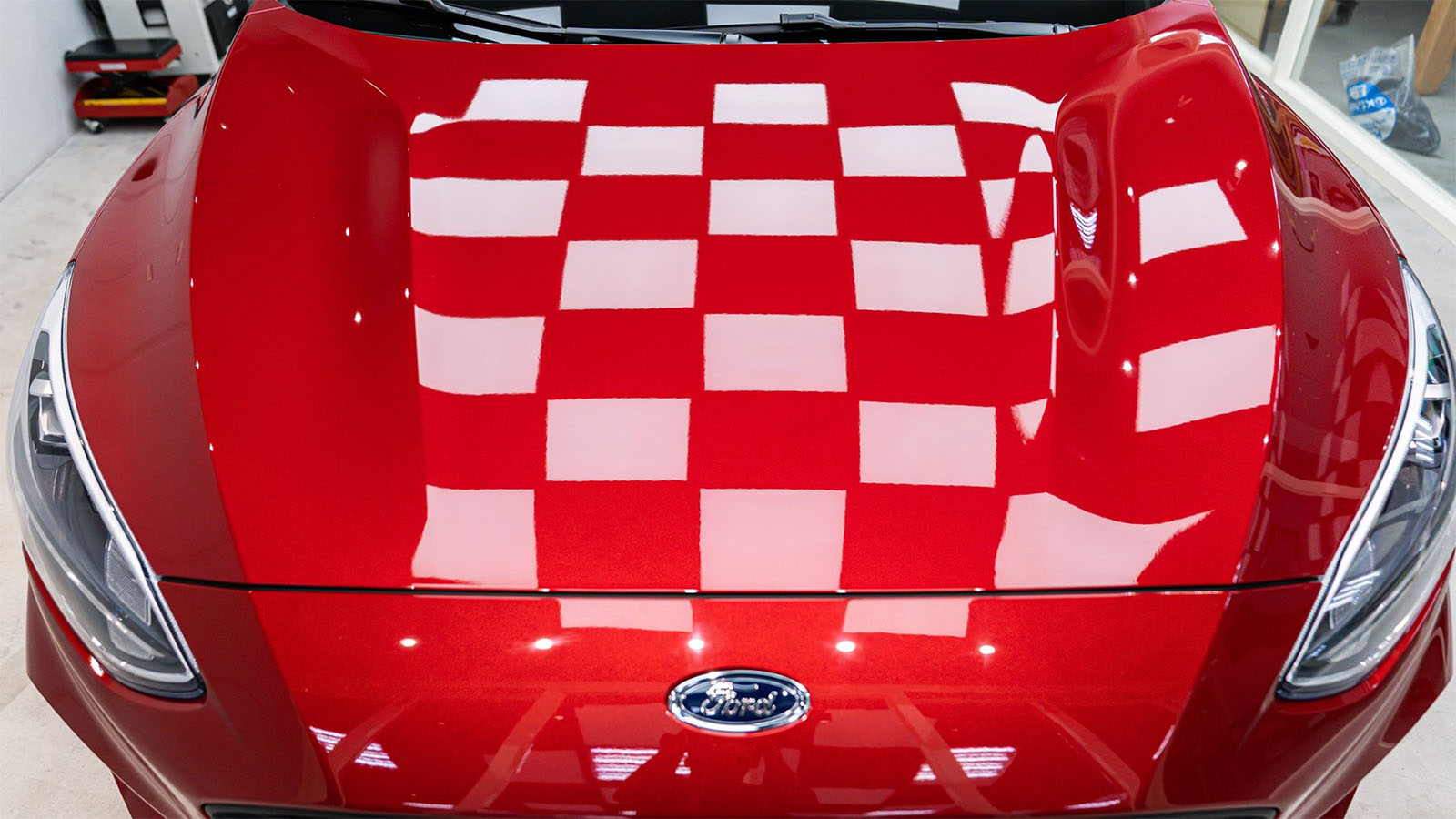High-grade Ceramic Coatings San Jose for a Perfect Finish
High-grade Ceramic Coatings San Jose for a Perfect Finish
Blog Article
Introducing the Scientific Research Behind Ceramic Coatings: Exactly How Does It Job and Why Is It Above Traditional Alternatives?
Ceramic coatings have been acquiring popularity in numerous markets for their outstanding efficiency and sturdiness. Recognizing exactly how ceramic layers work and why they surpass standard options is essential for those seeking to enhance the longevity and durability of their products.
The Chemistry of Ceramic Coatings
In recognizing ceramic finishes, diving into the complex chemistry behind their structure is vital for realizing their performance and toughness. Ceramic finishings are mostly composed of silicon dioxide (SiO2), which develops a protective and solid layer when related to various surface areas. This chemical structure offers exceptional resistance to heat, chemicals, and rust, making ceramic layers very searched for for a large range of applications.
The chemistry behind ceramic coverings includes the formation of covalent bonds between silicon and oxygen atoms, creating an inflexible network that boosts the coating's toughness and sturdiness. Additionally, the visibility of various other aspects such as light weight aluminum, titanium, and zirconium additional enhances the finishing's buildings, providing raised hardness and adhesion to surface areas.
Recognizing the chemical composition of ceramic finishings enables the customization of formulations to match certain needs, whether it be for auto, commercial, or residential objectives. By using the power of chemistry, ceramic finishes remain to lead the way for exceptional protection and performance in various sectors.
Benefits of Ceramic Coatings

An additional considerable benefit of ceramic finishings is their hydrophobic nature. This home causes water to grain up and roll off the coated surface area, bring dirt and pollutants with it. Therefore, ceramic layers make cleaning and keeping surfaces a lot easier and less taxing. Ceramic finishes offer improved gloss and tint depth, providing surfaces a glossy and lively look. Overall, the multitude of benefits used by ceramic coatings make them a remarkable option compared to standard layer methods.
How Ceramic Coatings Bond
Ceramic coatings bond to surface areas with a process that includes molecular bond and chemical interactions. When a ceramic finishing is applied to a surface area, it creates a solid bond by chemically sticking to the surface at a molecular degree. This bond is developed via the development of covalent bonds, which are exceptionally solid and durable. The ceramic finishing's particles penetrate the pores of the surface area, creating a limited grasp that withstands splitting up.
Additionally, the chemical interactions in between the ceramic covering and the surface even more boost the bond. ceramic coatings san jose. These communications allow the ceramic finishing to produce a constant and seamless layer externally, providing exceptional security and durability. Unlike traditional coatings that may remain on the surface without fully bonding, ceramic finishings produce a permanent straight from the source bond that is immune to chemicals, UV rays, and harsh environmental conditions

Fundamentally, the bonding mechanism of ceramic layers ensures a effective and resilient safety layer that outperforms traditional layer choices. This remarkable bond contributes to the sturdiness, scrape resistance, and long life of ceramic layers, making them a favored choice for numerous applications.
Sturdiness of Ceramic Coatings
The remarkable longevity of ceramic coatings originates from their durable molecular attachment and chemical interactions with surface areas, ensuring a long lasting safety layer that surpasses typical coating alternatives. As soon as used, ceramic finishes create a solid bond with the substrate, producing a resilient obstacle against various ecological stressors such as UV radiation, chemicals, and abrasions. This bond is so safe that it can endure the rigors of everyday usage without deteriorating or weakening rapidly.
Unlike traditional coatings that may weaken over time, ceramic coverings preserve their stability for an extensive period, supplying lasting defense for the underlying surface area. Generally, the exceptional resilience of ceramic coatings makes them an exceptional choice for protecting a broad array of surfaces in various applications.
Ceramic Coatings Vs. Standard Options
In contrast to standard layer techniques, ceramic coverings offer a distinct mix of sturdiness and safety abilities that set them apart in various surface area defense applications. Traditional choices such as wax or sealants offer a short-term layer of defense that can diminish swiftly, requiring constant reapplication. On the various other hand, ceramic coatings develop a strong bond with the surface, creating a permanent or semi-permanent obstacle that is extremely immune to abrasion, chemicals, UV rays, and severe temperature levels.
Furthermore, ceramic layers provide premium hydrophobic properties contrasted to traditional finishings. The hydrophobic nature of ceramic finishes causes water to bead up and roll off the surface, lugging dirt and impurities with it. This self-cleaning impact helps to preserve the surface area's cleanliness and gloss for extended durations, reducing the need for constant maintenance.
In addition, ceramic layers have a thicker layer go to this web-site contrasted to traditional options, supplying enhanced scrape resistance and protection against small influences. This toughness guarantees resilient performance and aids maintain the visual appeal of the treated surface area for a prolonged period.
Conclusion
In final thought, the scientific research behind ceramic finishes lies in their chemical make-up and bonding residential properties, making them above standard options. The benefits of ceramic coverings consist of enhanced durability and protection for surfaces. By understanding how ceramic finishings work and their advantages over conventional options, one can make informed decisions when thinking about finishing choices for different applications.
Unlike typical finishes that might sit on the surface area without fully bonding, ceramic coverings create an irreversible bond that is resistant to chemicals, UV rays, and severe environmental problems.
The phenomenal longevity of ceramic finishings stems from their durable molecular attachment and chemical communications with surface areas, making sure a long lasting safety layer that exceeds traditional layer options.Unlike traditional this website finishes that may deteriorate over time, ceramic finishes maintain their honesty for an extended duration, offering long-lasting security for the underlying surface area.In contrast to conventional layer methods, ceramic finishings provide an unique blend of longevity and safety abilities that establish them apart in numerous surface protection applications. By comprehending just how ceramic coatings job and their advantages over standard options, one can make informed choices when taking into consideration coating choices for various applications.
Report this page